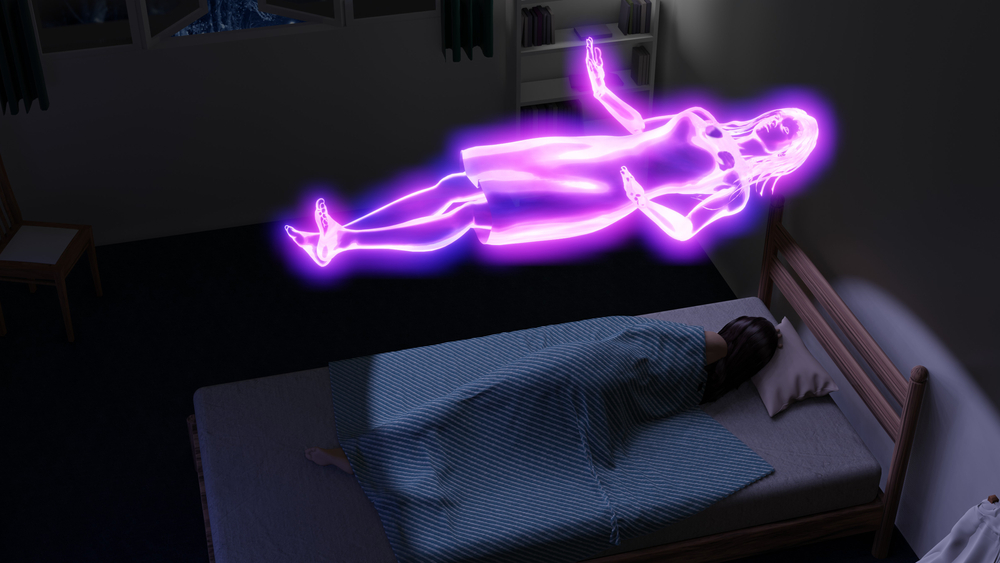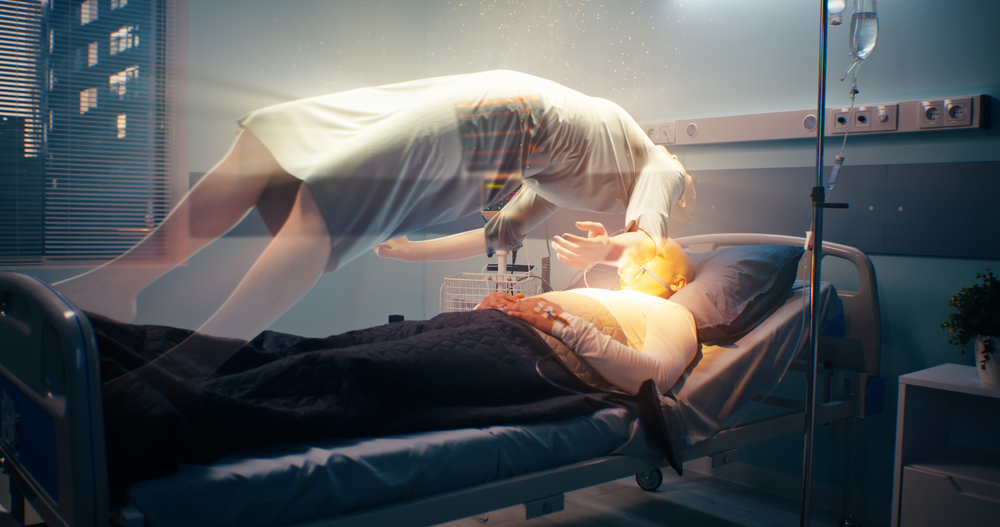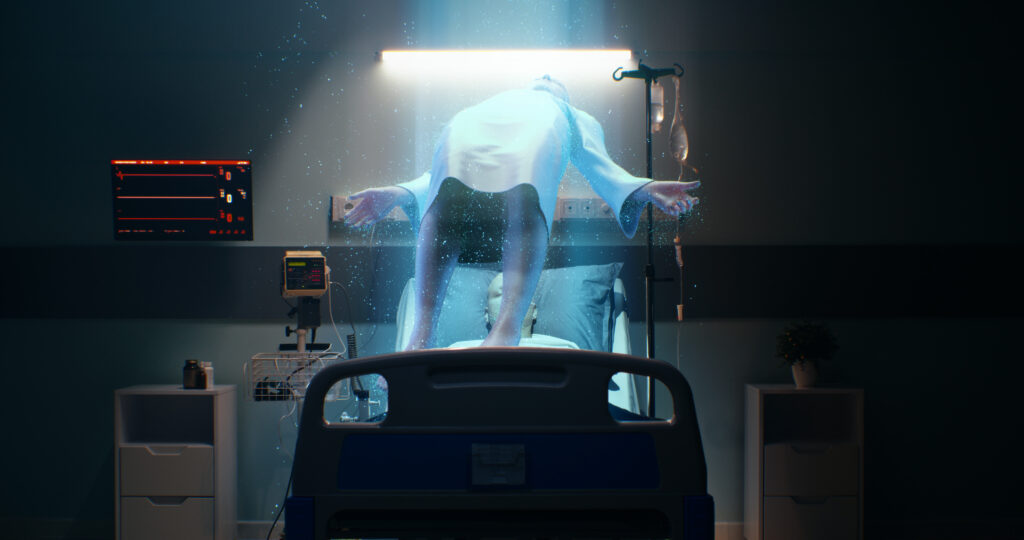Colorado Woman Who ‘Died’ for 8 Minutes Says She Discovered the Universe Is Made of Numbers

When 33-year-old Brianna Lafferty’s heart stopped beating for eight minutes, she thought it was the end. What she says she experienced instead changed her understanding of life, death, and everything in between. The Colorado woman describes leaving her body, encountering a realm made of light and numbers, and realizing that death itself is only an illusion.
To Brianna, those eight minutes were not empty. They were full of peace, clarity, and discovery. “I was more alive than ever before,” she said. “I understood that everything, including myself, was made of numbers. Everything was connected.”
Her story has since spread around the world, captivating people who wonder what really happens after we die. For scientists, philosophers, and spiritual seekers alike, Brianna’s experience stands at a fascinating crossroads between biology, physics, and something far more mysterious.
Living With a Rare and Relentless Disorder
Brianna’s journey did not begin with her near-death experience. For most of her life, she had battled a rare neurological disorder known as myoclonus dystonia. The condition causes sudden, uncontrollable muscle spasms that ripple through the body without warning. It is a daily struggle that can make even simple activities, like eating or standing still, painful and unpredictable.
She grew up in Colorado, learning to adapt to her body’s unpredictability with grit and humor. Her family remembers her as determined and stubbornly optimistic, even on days when the spasms left her barely able to move. The hardest part, she said, was not the pain but the helplessness that came with never knowing when her body might betray her.
As she got older, the disorder became more aggressive. There were nights when she couldn’t sleep for days, her body trapped in constant motion. Medication provided only limited relief. The exhaustion mounted. Then, one day, her body simply gave up.
The Moment Life Slipped Away

When Brianna’s heart stopped, doctors rushed to revive her. Machines beeped, alarms sounded, and medical staff fought to bring her back. By every clinical definition, she was gone. For eight minutes, there was no heartbeat, no breath, and no measurable brain activity.
Yet Brianna says she was aware of everything. “It wasn’t like fading to black,” she explained. “It was like stepping out of myself. I felt light, free, and completely calm.”
She describes watching the hospital room from above, detached from the scene yet somehow understanding what was happening. There was no panic or confusion. Only stillness.
Then, everything shifted. The hospital faded away, replaced by total darkness. But this was not an ordinary dark. It was a living silence, one that she said felt vast and welcoming. In that space, she heard a voice ask, “Are you ready?” When she replied yes, she felt herself pulled into what she calls “a place beyond time.”
A Space Without Time or Fear

In that other realm, Brianna says time did not exist. There was no sense of seconds passing, no heartbeat or breathing. She was aware, but in a completely different way. Her thoughts were her reality.
“There was no pain, no fear, no confusion,” she said. “It felt like I was everything and nothing at the same time.”
She described feeling as if her identity as “Brianna” had dissolved, leaving only pure awareness. There was no body to maintain, no struggle for air, no separation between herself and what she perceived as the fabric of the universe.
This experience of timelessness mirrors what many near-death experiencers describe. Neurologists have long noted that during cardiac arrest, the brain’s perception of time can distort. But even this scientific explanation does not fully capture the vivid, organized awareness that people like Brianna recall. Her account raises a question that has intrigued scientists for decades: does consciousness depend entirely on the brain, or can it persist beyond it?
The Realm of Living Numbers

What makes Brianna’s story uniquely captivating is what she encountered next. She describes entering a space made entirely of numbers streams of light, patterns, and equations flowing and vibrating as if alive. The numbers were not abstract symbols, she said, but “living entities” that pulsed with color and energy.
“It was as if I was traveling through a tunnel made of numbers,” she said. “They were the building blocks of everything. Every thought, every piece of matter, every emotion it all came from them.”
To her, this was not a hallucination but a revelation. The universe, she realized, was structured like a code, woven together by patterns of meaning. In that moment, she understood that existence itself is mathematical, and that consciousness interacts with this cosmic code to create reality.
Ancient philosophers might have nodded in recognition. The Greek mathematician Pythagoras taught that “all things are number,” believing that reality’s deepest structure was mathematical harmony. Modern physics, too, describes the universe through equations, constants, and ratios that govern everything from the spin of an electron to the orbit of a planet.
Some theoretical physicists, like MIT’s Max Tegmark, have even suggested that reality does not merely follow mathematical laws it is mathematics itself. To Brianna, that idea felt self-evident. She didn’t need to calculate it; she felt it.
Thought as Creation

Brianna’s experience also revealed something else: her thoughts seemed to shape the environment around her. Negative thoughts would fade before fully forming, while peaceful or loving thoughts seemed to create ripples of color and sound.
“I realized that our thoughts are powerful,” she said. “They literally create our reality. There, it happened instantly. Here, it just takes longer.”
This idea echoes a recurring theme in near-death research, where many report that the afterlife responds directly to intention. Psychologists studying such cases note that these experiences often lead to lasting personality changes. People return from clinical death more empathetic, more present, and less materialistic.
Whether this is due to chemical rewiring in the brain or to genuine contact with another level of existence, the result is the same: those who return often live differently. Brianna is no exception.
Meeting the Presence
As she drifted deeper into this mathematical world, Brianna sensed what she calls “a higher intelligence.” It did not speak in words but communicated through understanding. She said it radiated unconditional love, the kind of acceptance that made every fear dissolve.
“There was something there,” she recalled. “Not a person, not a god in the human sense, but a consciousness that felt infinite. It wasn’t judging me. It was just love, total love.”
Many who have had near-death experiences describe similar encounters a luminous presence, a feeling of unity, or a voice that seems to come from within. Neuroscientists have proposed that such visions may be generated by a dying brain releasing powerful chemicals. Others believe these are glimpses of an expanded consciousness, one that transcends physical limitations.
Whatever the explanation, Brianna says the encounter changed her forever. “After that, I knew there was something greater guiding everything. I stopped being afraid of dying.”

Eight Minutes or Eternity
Back in the hospital, the doctors were still fighting for her life. By their clocks, eight minutes had passed. For Brianna, it felt like months. She had time to learn, to explore, to meet what she described as “beings of light and awareness.” At one point, she says she was shown a kind of “scroll” that contained knowledge beyond words insights about the nature of existence and her own life’s purpose.
When she opened her eyes again, she was back in her body. Her first thought was confusion. Her second was gratitude.
The Hard Road Back to Life
Surviving death came with consequences. Brianna’s body had suffered damage during cardiac arrest, particularly to her pituitary gland, the part of the brain that regulates hormones. She had to relearn basic functions like speaking and walking. Later, she underwent experimental brain surgery to manage the lasting effects of her neurological condition.
Recovery was long and painful. Yet through it all, Brianna felt a calm sense of purpose. She no longer raged against her illness or her circumstances. “I used to be angry,” she admitted. “Now I understand everything happens for a reason, even the hard stuff.”
She describes the experience as a complete realignment of her priorities. The things she used to chase success, possessions, perfection lost their power over her. What mattered now was connection, gratitude, and awareness.

Science and the Edge of Death
Researchers around the world have been studying cases like Brianna’s for decades. At the University of Virginia and the University of Southampton, teams have collected thousands of near-death testimonies, many describing verifiable details of medical procedures that occurred while patients had no detectable brain activity.
In one 2022 study, neuroscientists recorded brain waves during a patient’s death and found bursts of high-frequency gamma activity associated with memory and perception. Some interpret this as the brain replaying key moments a possible scientific basis for the “life review” people often describe. Others believe it may point to consciousness persisting briefly beyond clinical death.
No one can say for certain what happens in those moments. But the evidence suggests that death is not a simple on-off switch. There may be an intermediate state biological, psychological, or something else entirely where awareness continues in ways we do not yet understand.
Philosophers and Physicists Weigh In
The idea that consciousness might survive death is not new. Philosophers from Plato to Descartes have speculated about the mind as something separate from the body. Modern physics, in its own way, hints at similar mysteries. Quantum theory shows that particles can exist in multiple states at once and remain connected across vast distances, a phenomenon known as entanglement. Some thinkers propose that consciousness itself could be a fundamental part of this web, not a byproduct of neurons but a field that matter interacts with.
Erwin Schrödinger, one of the fathers of quantum mechanics, once wrote that “the total number of minds in the universe is one.” To him, individuality was an illusion of perception, like waves on the same ocean. Brianna’s account resonates eerily with that notion. She insists that she experienced herself as both a drop and the whole sea.

Life After Death, In Life
Today, Brianna lives more peacefully than she ever did before. She still deals with the challenges of her disorder, but she approaches them with acceptance instead of fear. “What I feared no longer has power over me,” she said. “I just go with the flow.”
She now shares her story publicly, hoping to comfort others who fear death. To her, the lesson is not just that consciousness may continue, but that the way we think shapes our experience right now. “We can create heaven or hell through our thoughts,” she said. “The afterlife just shows it more clearly.”
Psychologists studying near-death survivors have found similar transformations. Many lose their fear of death, become more compassionate, and report stronger connections to other people and nature. Whether these changes are spiritual or neurological, they often lead to profound healing.
The Mystery That Refuses to Die

Throughout history, humanity has wrestled with the question of what happens when life ends. Ancient Egyptians imagined the soul crossing rivers and weighing its heart against truth. Tibetan texts speak of the “bardo,” a realm between lives. Modern medicine measures electrical activity and oxygen levels, but even the most advanced machines cannot measure consciousness itself.
Brianna’s story fits within this long lineage of mystery. Yet it also speaks to a distinctly modern imagination a digital-age version of the afterlife, where light, data, and number converge. Perhaps it is fitting that in a world ruled by information, our visions of eternity would take the shape of code.
What Her Experience May Be Teaching Us
Whether one sees Brianna’s account as spiritual revelation or the product of a stressed brain, it carries a human truth: confronting death changes how we live. In facing the ultimate unknown, she discovered not fear, but wonder. Her experience suggests that peace may not come from escaping the fragility of life, but from understanding that fragility as part of a greater pattern.
If consciousness truly is intertwined with the mathematical fabric of the universe, as Brianna felt, then perhaps death is not disappearance but transformation a reconfiguration of the same information into another form. Even if her vision was symbolic, it reflects a timeless intuition that we are part of something larger than ourselves.
The Continuing Question
Science continues to probe the edges of death, and spirituality continues to offer its own answers. Yet neither side holds the full story. Brianna Lafferty’s eight-minute journey sits precisely in that gap a bridge between the measurable and the mysterious.
To this day, she sums up her revelation with a quiet certainty: “Death is an illusion. The soul never dies. We are all part of a pattern that keeps unfolding.”
Her words echo both poetry and physics, both mysticism and math. Whether you see her experience as evidence of an afterlife or as the extraordinary power of the human brain, one thing is undeniable: her story challenges us to rethink what it means to be alive, to think, and to be aware.
Perhaps, as Brianna suggests, we are all numbers in the grand equation of existence briefly separated, infinitely connected, and always, somehow, alive.
Loading...

